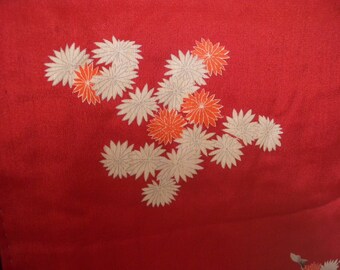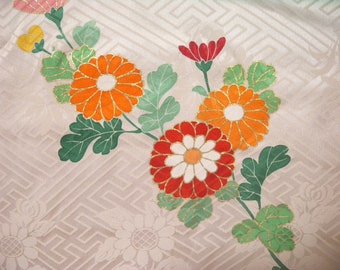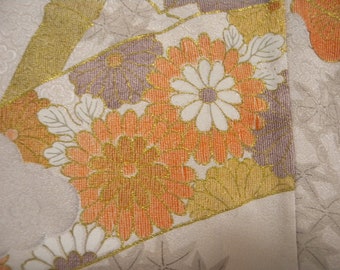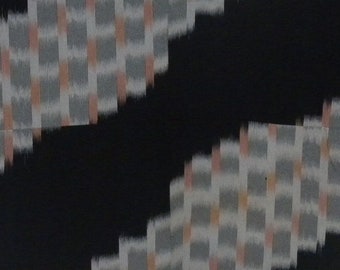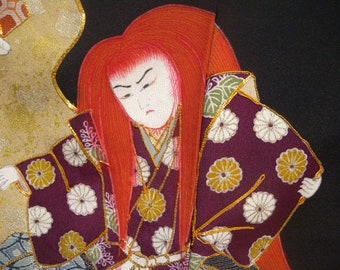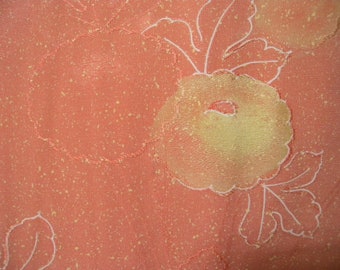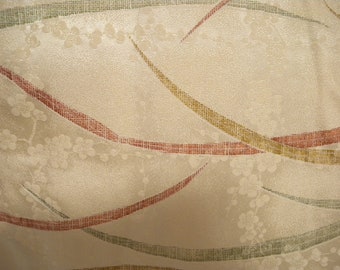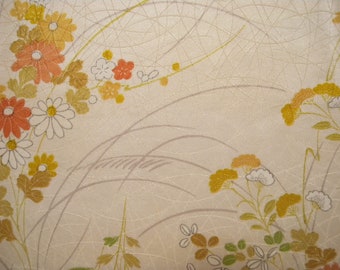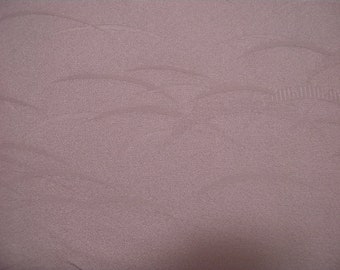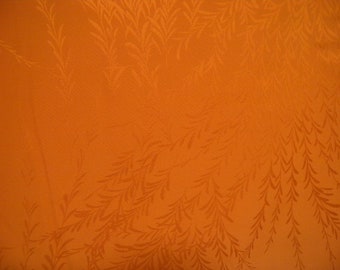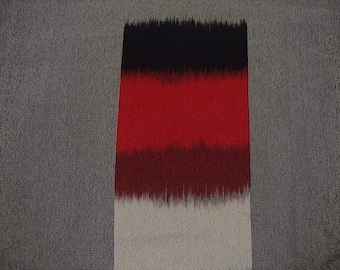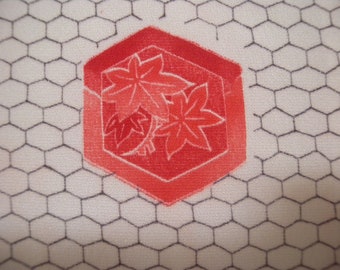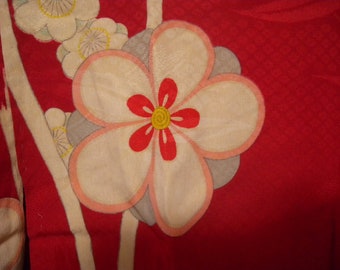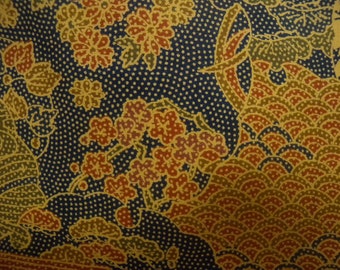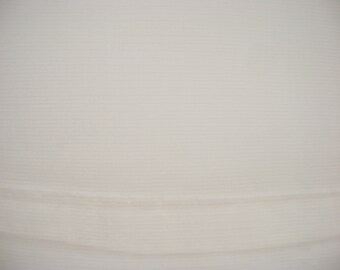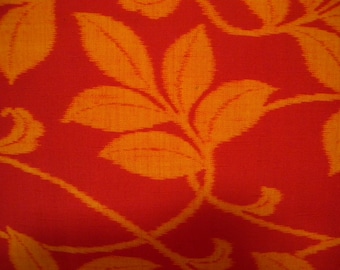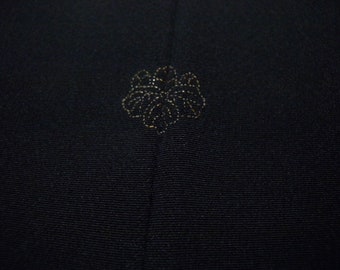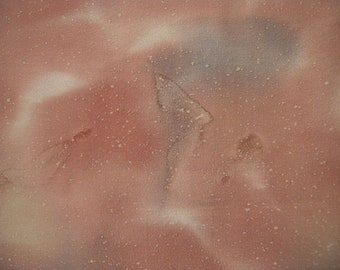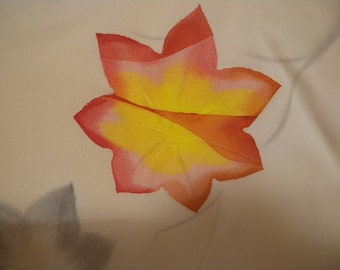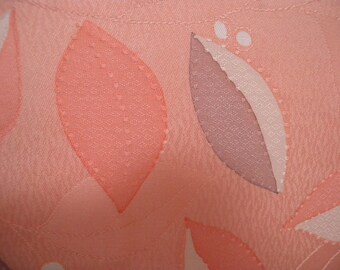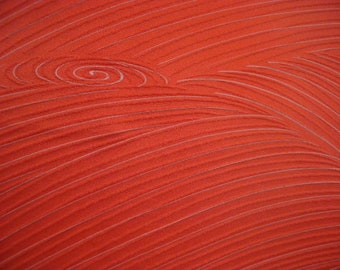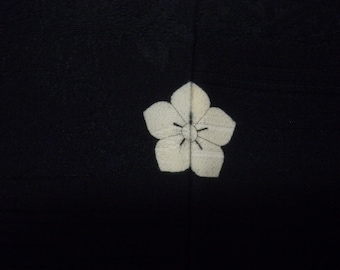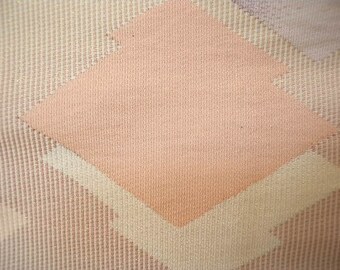Announcement
Welcome to Folding Cranes, my Etsy shop. Enjoy yourself as you look around.
All items include shipping. I have included a glossary of terms below.
Blogs
http://togeii.wordpress.com/ or http://japanesetextiles.wordpress.com/
I do my best to find and describe the pieces as best as I can. If I miss something it isn't intentional.
I use many of the Japanese terms. I will try to flesh them out to their English equivalents.
Chirimen are crepe fabrics. I often note the amount of twist the thread has. This is a direct reference to this aspect of it. A slight twist is a surface that is close to a flat or open weave, a heavier twist is closer to a chirimen. A true chirimen I often note. There are many types of chirimen with what is called an ‘oni’ chirimen being the roughest. The 2 most common chirimen are ‘chirimen’ and kinsha. Kinsha is a less rough weave than chirimen. There are also many other grades that are probably trade words. Shinonome, is the least rough surface all the way up to oni chirimen, not made today. Omeshi is probably the second most strongly wound thread chirimen, just below oni chirimen. It is still produced today.
Meisen are industrially produced weaves, all flat weave, mostly ikat. Kasuri is the word in Japanese for what is called ikat. Industrially produced means they were not single pieces but designs produced in a series of the same design. Meisen were produced in response to the want for a fashionable design in an affordable kimono pre-W.W.2 and into the 1950s. The designs are modern and still standout today. It is helpful to think of what was filtering into Japan from the West in the period they were produced to really understand how Western influences were assimilated into designs that were distinctly Japanese. They are still collectable, i.e., affordable, but I suspect in a few years they will be worth a lot more, especially the more daring designs. They have already risen to the top of the ‘regular’ type used kimono in auction prices.
Kasuri is the Japanese term for ikat.
Roketsuzome is the Japanese term for batik. Pronounced RO KE TSU ZO ME
Shibori is the Japanese term for tie-die.
Kanako shibori is the Japanese term for small, roundish shibori patterns. The term refers to the pattern on a baby deer’s back.
Rinzu is the Japanese term for damask. Japanese rinzu can get very intricate and involved to the point where I am often shaking my head in wonderment and trying to figure out how the weave was assembled.
Yuzen is the Japanese term for hand dyed designs. Yuzen has to some extent lost its meaning as most things can, in the end, be called yuzen. Traditionally yuzen meant designer done hand dyed. Now it means almost anything that has had some part done by hand. The distinctive characteristic of yuzen is when the design element has an outline.
Tate is the Japanese word for warp. So, a tatekasuri is a design where only the warp threads were dyed.
Yoko is the Japanese word for weft. Yokokasuri is a design where only the weft were dyed. Tateyokokasuri is a full, warp/weft ikat design.
Tsumugi is thread from the silk cocoons. The thread made from it is rough to the touch. I really like it but some people can’t wear it. I like it to what I used to call ‘raw silk’ although that probably isn’t a correct term.
I may use the term jinken sometimes, it is the Japanese word for synthetic fiber.
Sashiko is a basic type of embroidery.
Shishu is the Japanese word for embroidery.
Mosu is the Japanese word for muslin.
Aizome is the Japanese word for indigo dye. Some, sometimes written zome in the second or later syllable, is the word for dye. You can see it in a couple of the terms above, roketsuzome being one.
Tomesode = The pattern is only at the bottom and there are at least 1 crests with a maximum of 5. Usually black which are the most formal and are called kurotomesode. A color other than black in a tomesode is called irotomesode which is sometimes shortened to irosode. Tomesode is made from 2 words. Tome = stop or shorten, sode = sleeve.
Furisode = This is for young women. They have long sleeves and usually very bright and colorful designs. There are 3 ‘ranks’ for the sleeves. Ko-furisode, koburisode are the shortest, chu-furisode, chuburisode, are between the ko and oo, and oo-furisode which are the longest.
Iromuji = A plain colored kimono for general use although as with most things in Japan it isn’t that simple. There are formal, plain colored kimono. Formality is achieved by the addition of a crest with a maximum of 5.
Yukata = A summer kimono which is usually cotton.
Houmongi = This is the second most formal, right after the Tomesode. They don’t have crests. The significant pointer is that the design runs over the seams and often from the back of the kimono to the front. See below, tsukesage, for the reason why that is important. The word houmon means to visit, gi is a phonetic variation on ki which is the word for wear, the same as kimono’s ki.
Tsukesage = The pattern doesn’t go from front to back. The importance of that is that the seams don’t need to be matched for pattern. Doing so takes more fabric and a higher level of skill in the person sewing the kimono.
Komon = The technical definition of komon is a pattern that has no ‘up’ direction. That is, the pattern isn’t oriented to one direction so that if it is rotated it would seem to be upside down.
Hitoe = An unlined kimono, usually for summer.
Awase = A lined kimono suitable for all seasons other than summer.
Mon = A family crest.
Kinshi = Gold thread. There are many types and qualities but basically kinshi is only used in higher end pieces.
Featured items
Items
All Items
Reviews
-

Tekla on Apr 6, 2024
5 out of 5 starsBeautiful Kimono in perfect condition. Extremely quick shipping, very happy with my purchase. Thank you so much:)
-

-

Tai on Mar 7, 2024
5 out of 5 starsNice obi. There was a few marks that I did not see on the description photo.
-

LizHartVision on Mar 4, 2024
5 out of 5 starsThis Shop and Seller is amazing! My order was shipped out within hours! Order arrived sooner than expected, and was carefully packaged to protect from any weather! And of course the items were just as described, beautiful vintage kimonos. Thank you so much!
-

LizHartVision on Mar 4, 2024
5 out of 5 starsThis Shop and Seller is amazing! My order was shipped out within hours! Order arrived sooner than expected, and was carefully packaged to protect from any weather! And of course the items were just as described, beautiful vintage kimonos. Thank you so much!
-

-

Anna on Feb 21, 2024
5 out of 5 starsIt's better than on photos, very soft and nice in touch. It came fast and well packed. Thank you!
-

Anna on Feb 21, 2024
5 out of 5 starsIt's better than on photos, very soft and nice in touch. It came fast and well packed. Thank you!
-

Shiloh on Feb 18, 2024
5 out of 5 starsAnother gem. Beautiful fabric. Stitched for stability in transit. Great addition to your wardrobe instead of another blazer
-

Julia on Jan 30, 2024
5 out of 5 starsAmazing colors and quality. Perfect communication! Love this shop!
Shop policies
Accepted payment methods
Returns & exchanges
Cancellations
Cancellations: not accepted
Please contact the seller if you have any problems with your order.
